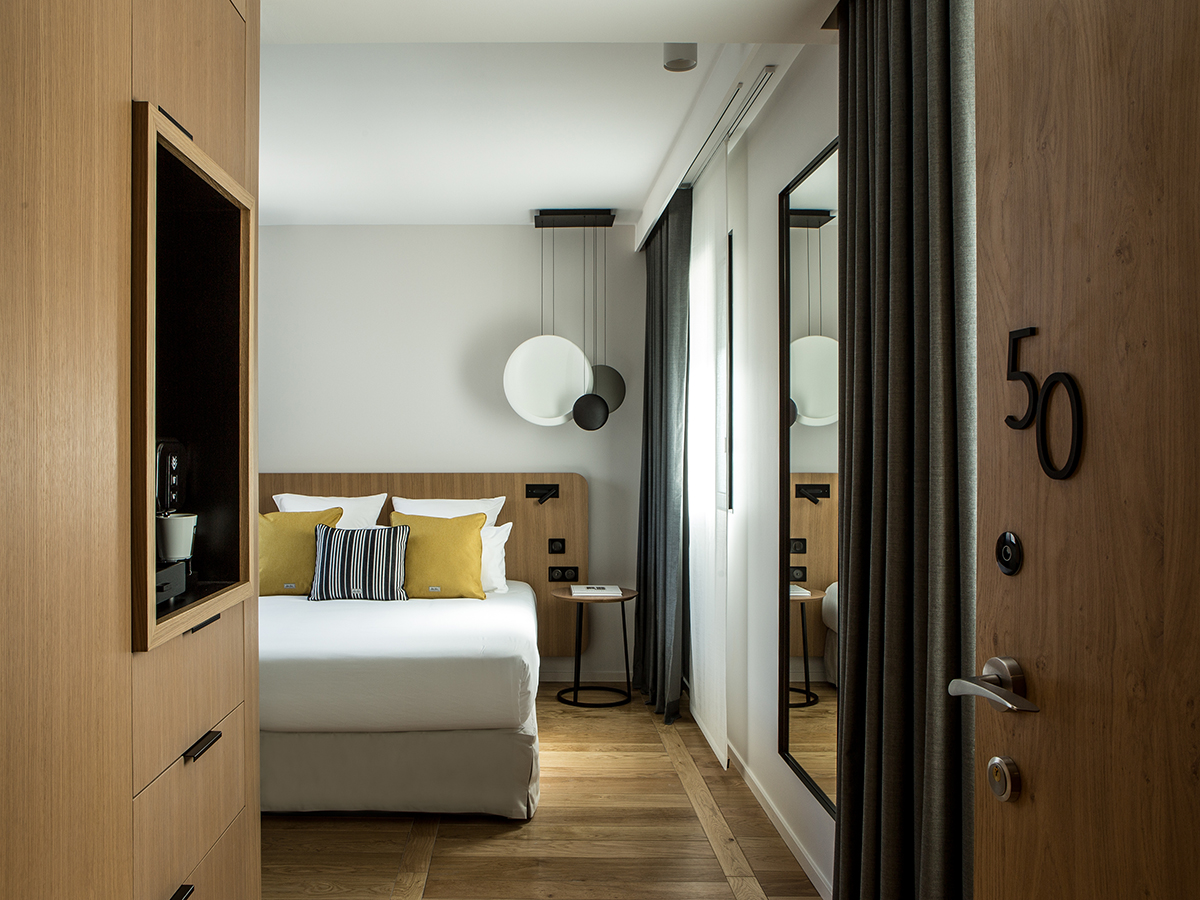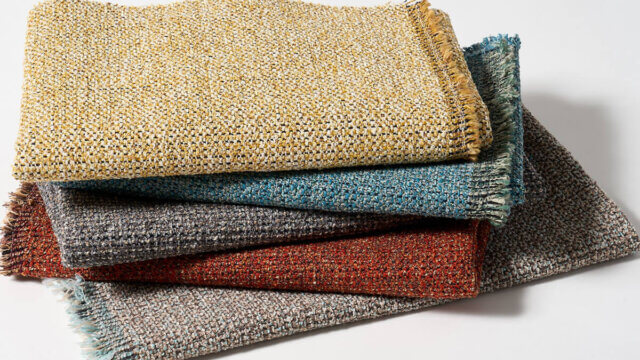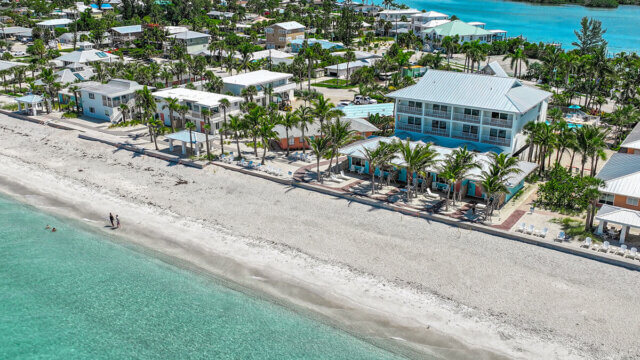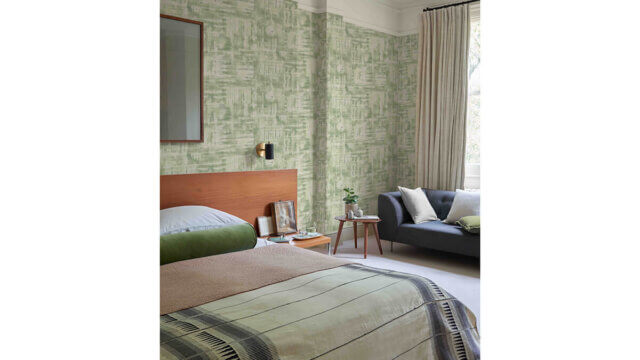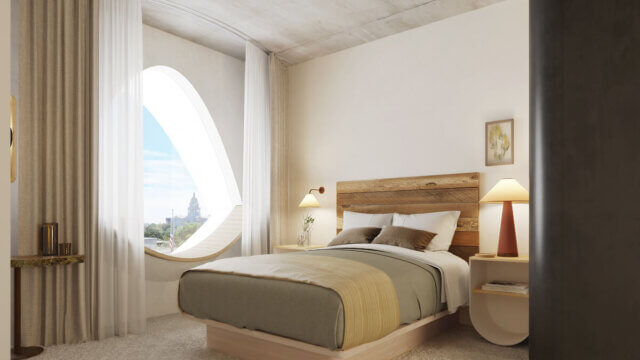Bayonne, the thousand-year-old city located in the French Basque country, unfolds joyfully in a maze of colorful streets and alleys. There, architect and interior designer Jean-Philippe Nuel and Biarritz architect Bernard Signoret have given shape to the Hotel Villa Koegui and the restaurant Le Carré, where innovation and the future intersect with history and heritage.
The contemporary facade echoes the city’s half-timbered buildings, which themselves bear witness to the architectural tradition of the shipbuilding industry.
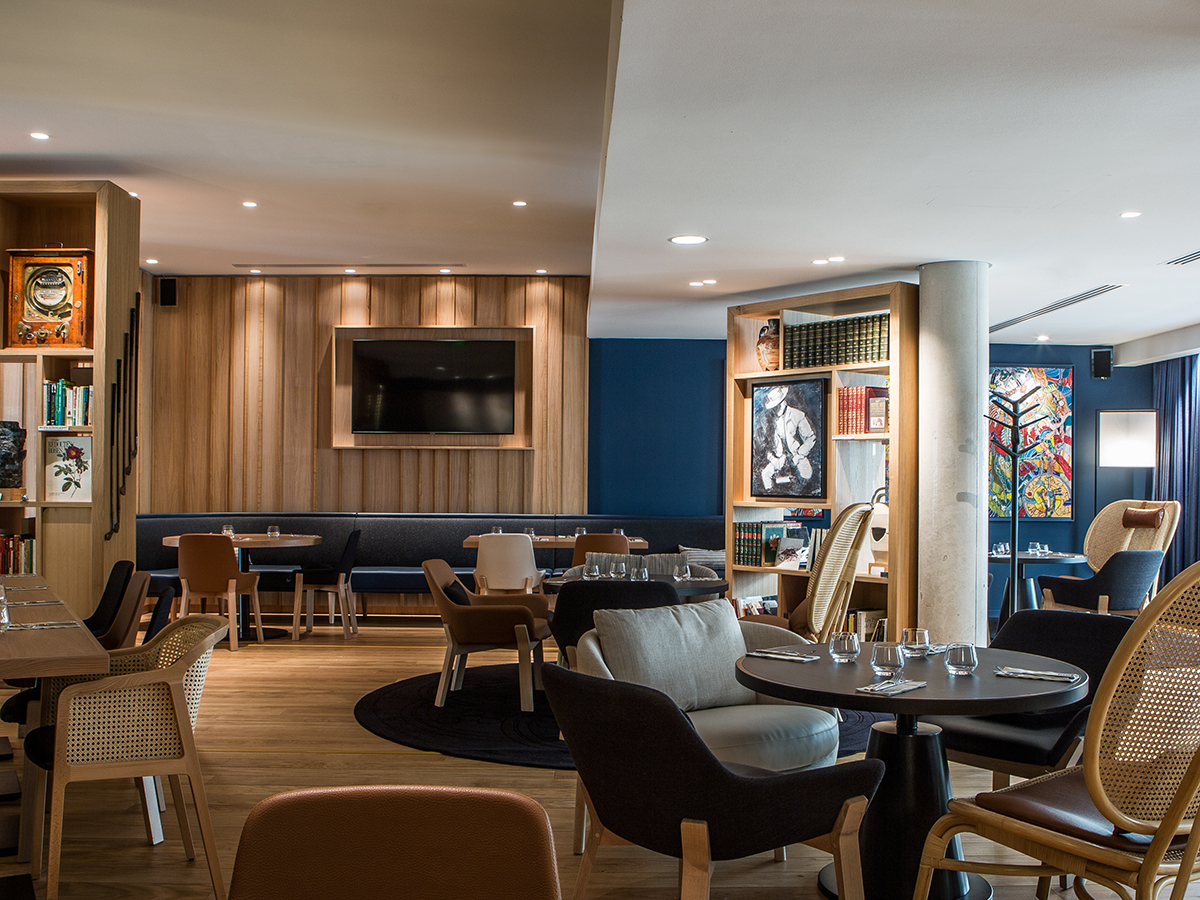
Everything in the design of Villa Koegui’s interiors suggests an invitation to the Basque Country’s art of living and history. Thus, the main inspiration was the tradition of the Peñas, which brings people together around shared passions.
The hotel’s common areas and rooms are decorated with a collection of more than 600 works of art—engravings, traditional paintings from the 19th century and more contemporary works—whose common denominator is the Basque Country.
The artistic appeal is completed by the first-floor bookshelves filled with a selection of novels, poetry and photographic works, each one selected by Guy Néplaz, the hotel’s owner, a publisher and a seller of vintage books.
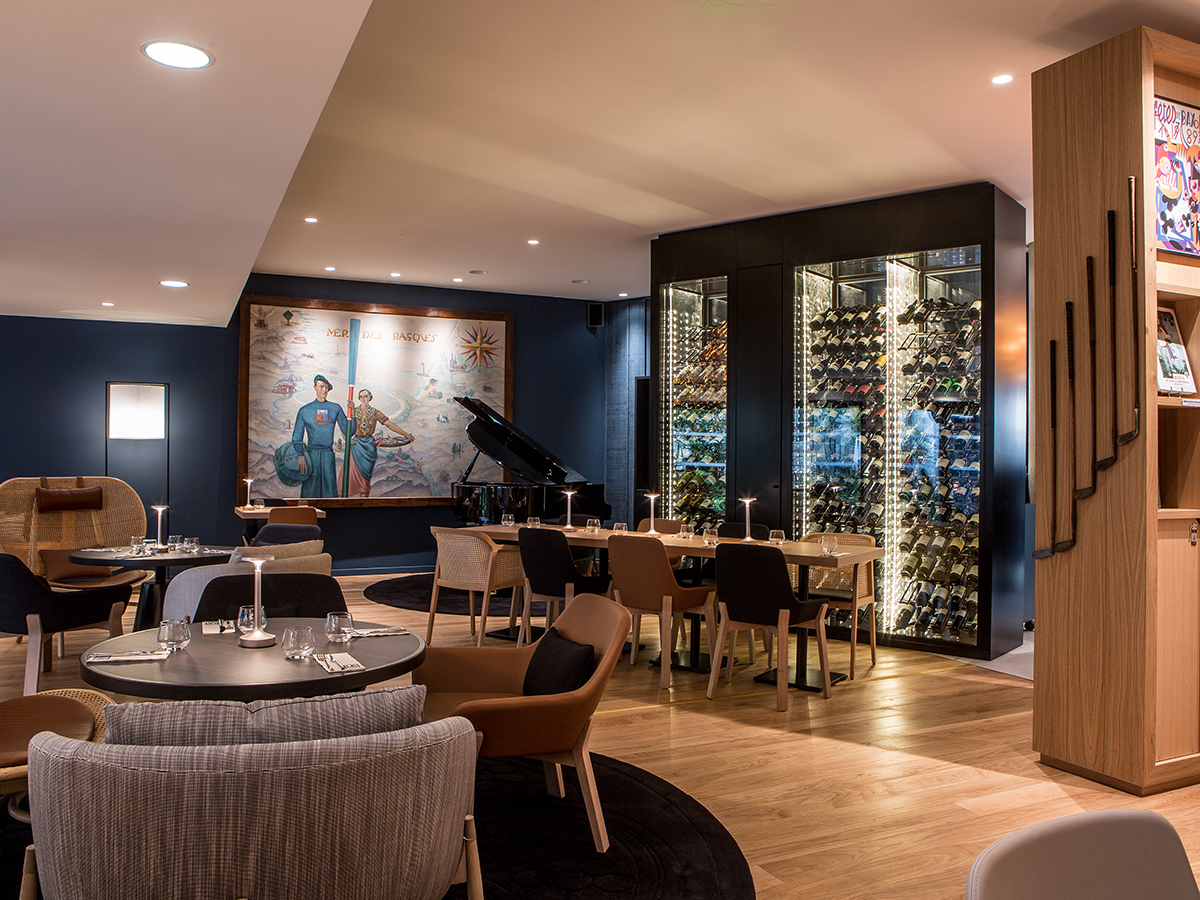
“We wanted Villa Koegui to be more than just a hotel,” Nuel said. “We aimed at creating a welcoming, familiar and human atmosphere that mirrors Néplaz’ personality. As a result, we designed a hotel for people to feel at home in the Basque country.”
Beyond serving as a passageway for guests to the city of Bayonne, Villa Koegui offers links to the regional lifestyle and the possibility of experiencing the festive character of the Peñas, closely linked to Bayonne’s festivals. Thus, the bar, placed in the center of the space, is crowned with a multicolored garland from which emanates the friendly, joyful and generous Bayonne spirit.
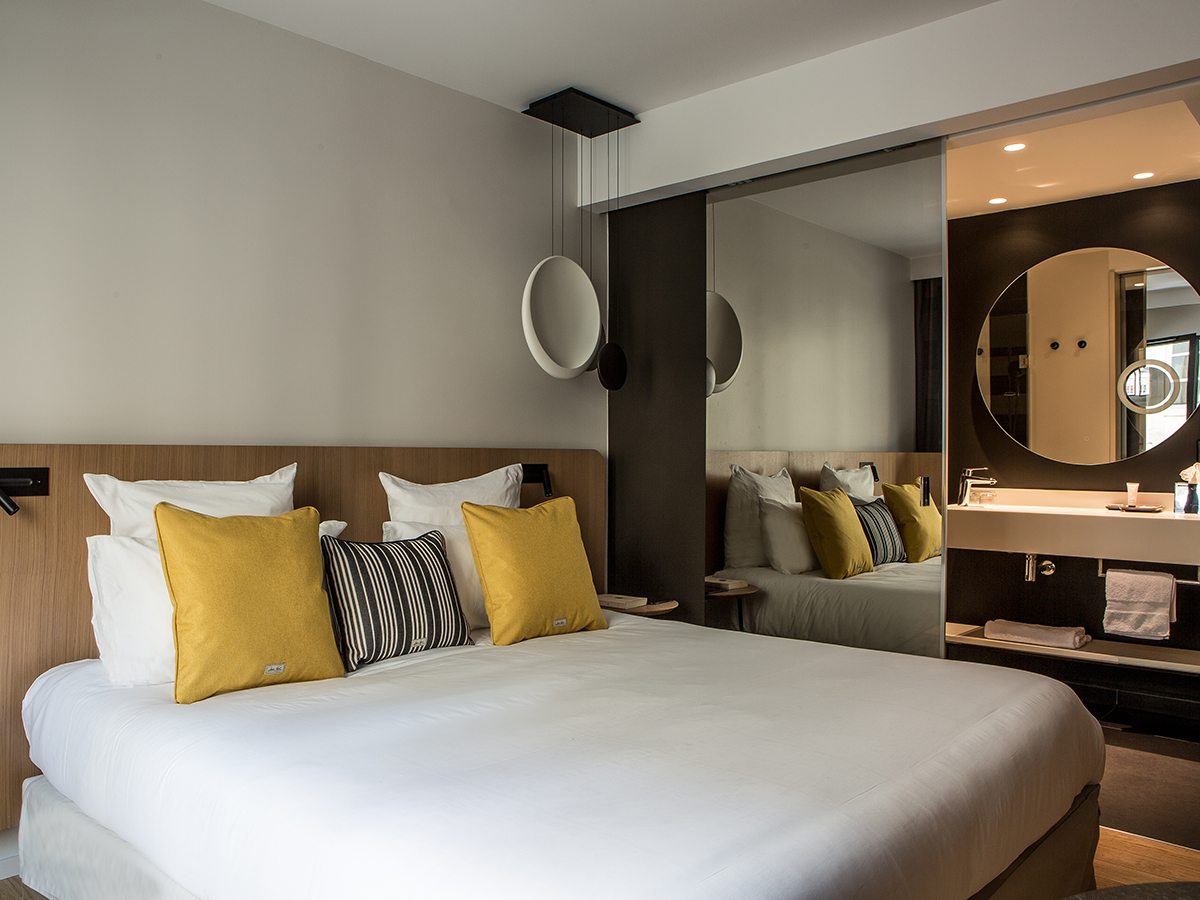
“A contemporary hotel must voluntarily be part of its local environment; a guest may discover it as a stranger at first but, on arriving, they are entirely immersed in the surrounding city,” Nuel noted.
Villa Koegui’s restaurant, Le Carré, reflects its past as the Carré Bonnat, once the gathering place of the Basque artistic avant-garde. Visitors and residents of Bayonne can enjoy Le Carré throughout the day for a meal, a drink and some pintxos (a Basque specialty made of a slice of bread topped with a culinary creation). Here, the hotel function recedes into the background to make room for the nourishing Basque gastronomic culture.
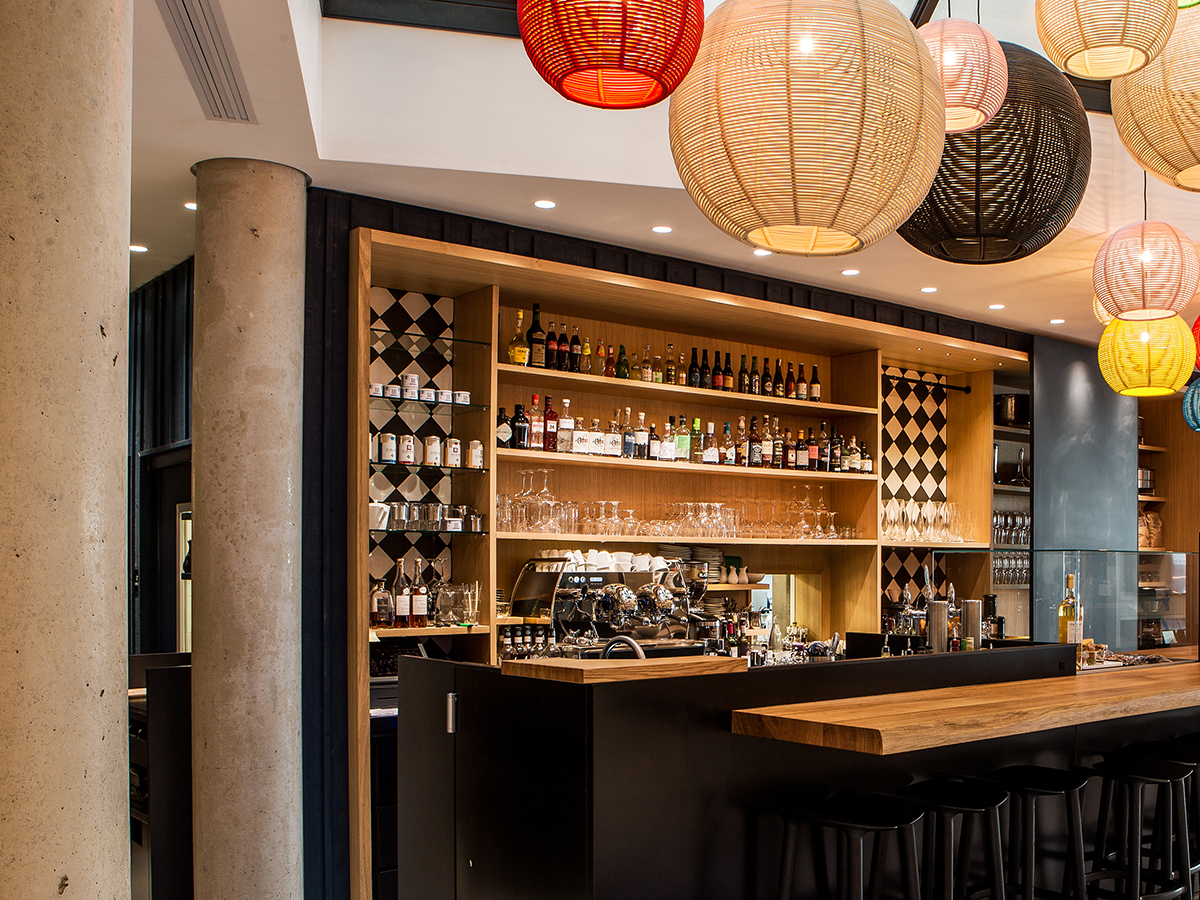
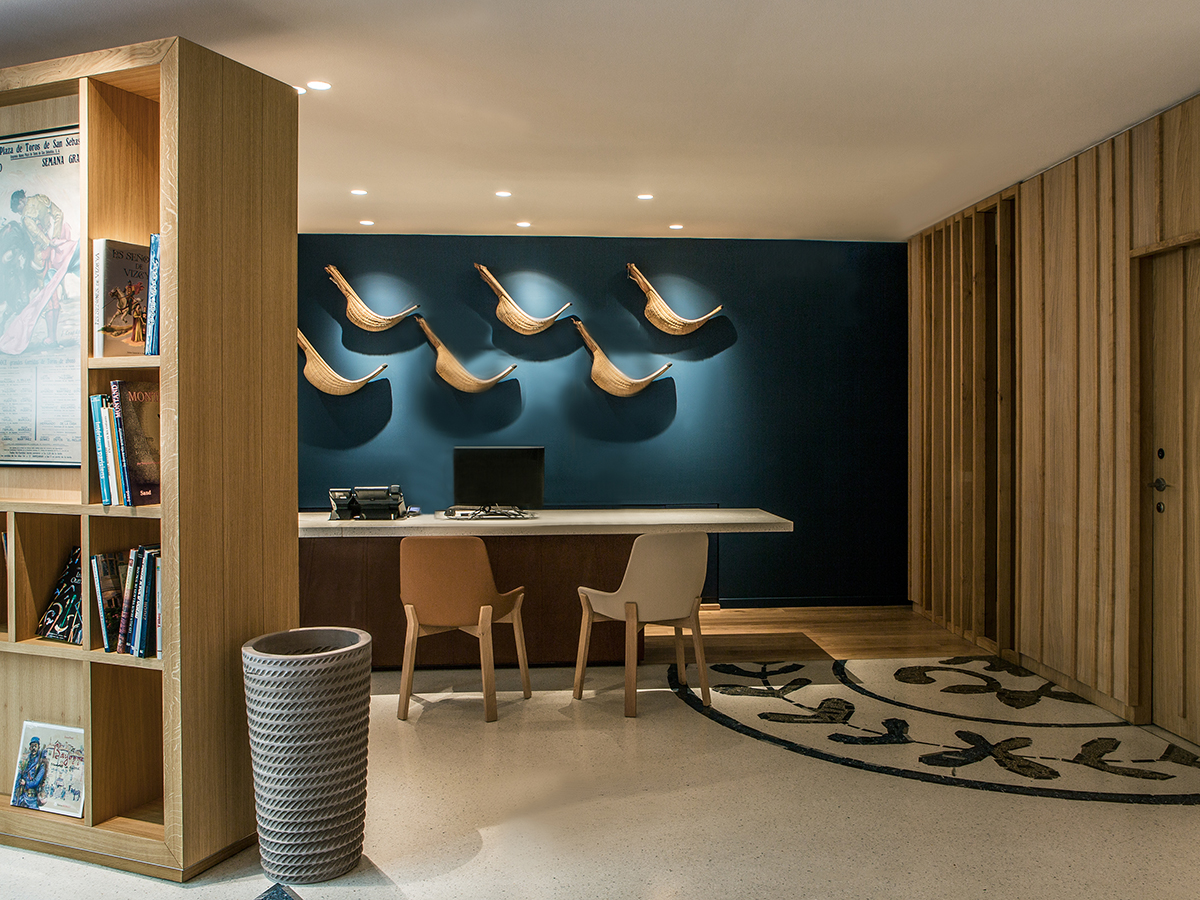
The rooms are another facet of Bayonne’s culture to be explored through the display of works by Bonnat and Helleu. Léon Bonnat—a painter and engraver—was born in Bayonne in 1833. He is remembered for his portrait gallery featuring some of France’s greatest figures of the late 19th century: Pasteur, Hugo, Gambetta and Alexandre Dumas fils. Paul Helleu, a painter of the same period, is also very present in the Bayonne Museum of Fine Arts, found just a few steps from the hotel.
An accompanying explanation of each reproduction further adds to the hotel’s unique identity. The full-scale impression of the characters creates a specific relationship, offering visitors an opportunity to enter an intimate dialogue with the paintings, whose characters seem ready to emerge from the walls for a surprising encounter, providing another facet of the journey into history proposed by Villa Koegui.
Finally, the works of local artisans also enter this cultural mooring with the detailing of the Bayonnaise-style parquet floor and the Bayadère in the bathroom tiles giving meaning to the decorative choice.
